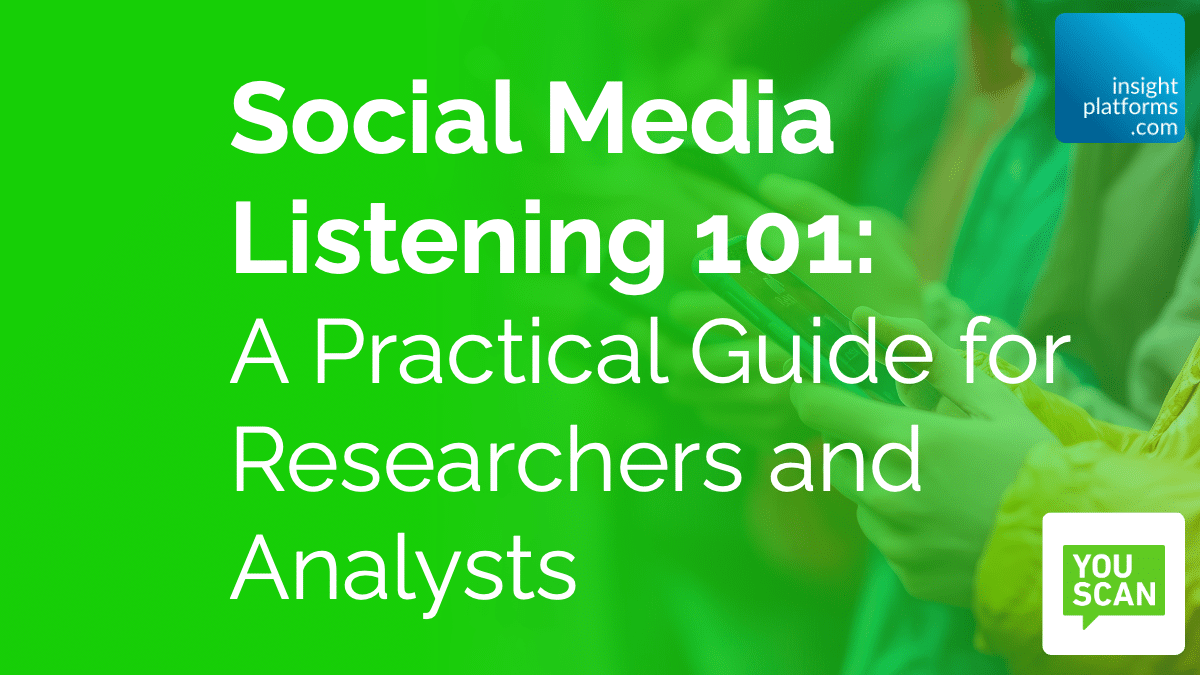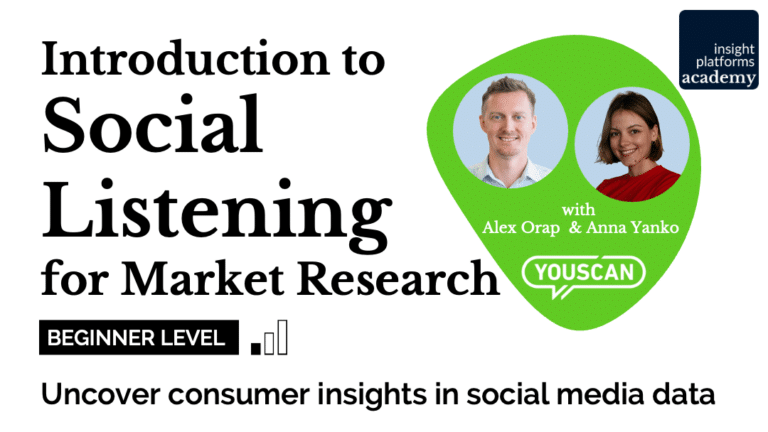
Social Media Listening 101: A Practical Guide for Researchers and Analysts
By YouScan
- article
- Social Media Listening/Intelligence
- Trend Monitoring
- Trend Analytics
- Competitor Analysis
- Real-Time Consumer Feedback
- Behavioural Tracking
Social media is the world’s biggest conversation, constantly buzzing with opinions, stories, and trends. But how do you make sense of all that noise? With social listening tools like YouScan, researchers and analysts can go beyond the noise, tap into the real stories behind the data, and turn that endless chatter into actionable insights.
Stay up to date
Subscribe to receive the Research Tools Radar and essential email updates from Insight Platforms.
Your email subscriptions are subject to the Insight Platforms Site Terms and Privacy Policy.
In this article, we’ll break down the essentials of social media listening, including:
- What is Social Media Listening?
- Why Is Social Media Listening important for researchers?
- What are the strategic goals of Social Media Listening?
Want to go a bit deeper? Enrol in this free course in the Insight Platforms Academy:
Introduction to Social Listening for Market Research
What Is Social Media Listening?
Social media listening means keeping an eye on online conversations – both in real time and historically – to understand what people think, feel, and say about specific topics. It involves tracking keywords, hashtags, brand mentions, and product discussions.
Simply put, if it’s mentioned online and it matters to you, it can be analyzed.
The true value of social media listening lies in its flexibility. You can tweak search queries as you go, tailoring the process to your specific research goals. Unlike traditional methods like focus groups or phone surveys, social media listening doesn’t require travel, lengthy interviews, or tedious transcriptions. Everything you need is at your fingertips, and with AI, much of the heavy lifting, like data collection and analysis, happens automatically.
Behind the convenient and user-friendly interface lies advanced technology that’s constantly evolving to deliver the most accurate and up-to-date insights.
With sophisticated social listening tools like YouScan, professionals can:
- Analyze sentiment to catch subtle shifts in audience attitudes.
- Identify emerging trends and market dynamics.
- Make data-driven decisions based on consumer insights.
- Adapt marketing and product strategies to meet audience expectations.
Why Is Social Media Listening Important for Researchers?
Social media is an incredible source of insights. By 2025, over 5.4 billion people are expected to use it, spending around two hours a day on platforms like Facebook, TikTok, LinkedIn, and Reddit (Statista). The massive amount of data generated every day offers endless opportunities for exploration.
For researchers, this data provides valuable ways to:
- Understand Behavior: Discover patterns, themes, and sentiment trends to better grasp consumer actions and preferences.
- Decode Culture: Identify cultural shifts and broader themes that help you stay relevant and insightful.
- Track Competitors: Analyze competitor strategies and audience reactions to uncover strategic opportunities.
- Spot Trends Early: Detect engagement patterns and sentiment changes to stay ahead of emerging trends.
Social media listening equips researchers with the tools to find meaning in the noise and make informed decisions based on real-time insights.
Strategic Goals of Social Media Listening
To make an impact, social media listening should focus on key objectives that drive real business value. Here’s how brands can leverage insights to stay competitive and responsive.
Reputation Management in Real Time
Monitoring brand mentions allows companies to respond quickly to customer feedback and potential reputational risks. Social media listening helps uncover pain points, highlight positive sentiment, and track how public perception shifts over time.
For example, the sentiment analysis below showcases how LEGO customers feel about the brand. While many express enthusiasm, a significant portion of conversations mention high prices as a concern. With YouScan’s advanced aspect-based sentiment analysis, brands can identify these issues early and address them proactively.

LEGO Sentiment Breakdown: Sentiment analysis of customer conversations online (Nov 10 – Dec 10, 2024)
Market Research and Trend Analysis
Understanding customer needs and preferences is essential for creating relevant products and messaging. Social media listening enables brands to explore organic conversations, track trending topics, and adjust their strategies accordingly.
For instance, analyzing popular TikTok discussions around #BookTok helps brands in publishing, e-commerce, and entertainment align with audience interests.

#BookTok Trend Analysis: A word cloud of key hashtags associated with BookTok, highlighting popular themes in book discussions (Jan 2025)
Understanding Customer Engagement
Authentic engagement happens when brands understand how customers interact with their products in real life. For example, YouScan’s visual analytics technology helps identify brand mentions in images, offering deeper insight beyond text-based data.
The image analysis below detects brand logos and relevant objects, such as food and beverages, providing businesses with a better understanding of consumption habits and brand placement in user-generated content.

An application of YouScan’s visual insights, detecting Starbucks and Burger King logos in user-shared photos
Competitive Benchmarking
Knowing how your brand stacks up against competitors is key to refining strategies and staying ahead. Social media listening allows businesses to compare strengths and weaknesses, analyze customer sentiment, and identify areas for improvement.
The comparative analysis below highlights key strengths and weaknesses for popular supermarket chains – Lidl, Carrefour, Tesco, Rewe, Kaufland, and Aldi.

Side-by-side comparison of multiple brands’ strengths and weaknesses using YouScan’s AI analysis of customer feedback (Q3, 2022)
Crisis Detection and Management
Early crisis detection is crucial for mitigating reputational damage. Social media listening helps brands identify sudden spikes in complaints, understand the root causes, and respond with targeted solutions before issues escalate.
The example below illustrates how mentions of L’Oréal Elvive Shampoo surged after a user reported hair loss.

L’Oréal Elvive Crisis Monitoring: A spike in social media mentions following a product-related complaint (September 2024)
Identifying such trends early enables brands to address concerns transparently and prevent misinformation from spreading.
Why Social Media Listening Matters
For researchers and analysts, social media listening is a dynamic way to understand real people, real conversations, and real shifts in sentiment. Whether it’s tracking consumer behavior, spotting cultural trends, benchmarking competitors, or detecting potential crises, the ability to turn unstructured online chatter into insights is what makes this research method so valuable.
Unlike traditional research methods, social media listening offers continuous access to organic, unfiltered opinions at scale. It allows you to go beyond surveys and focus groups, capturing what people actually say, think, and feel in real time. If you’re looking to enhance your research with real-time consumer insights, try YouScan for your next research project.
By integrating social media listening into your research approach, you gain a more holistic understanding of your audience and industry. And in a world where opinions shift quickly, having that depth of insight can mean the difference between reacting to change and anticipating it.



